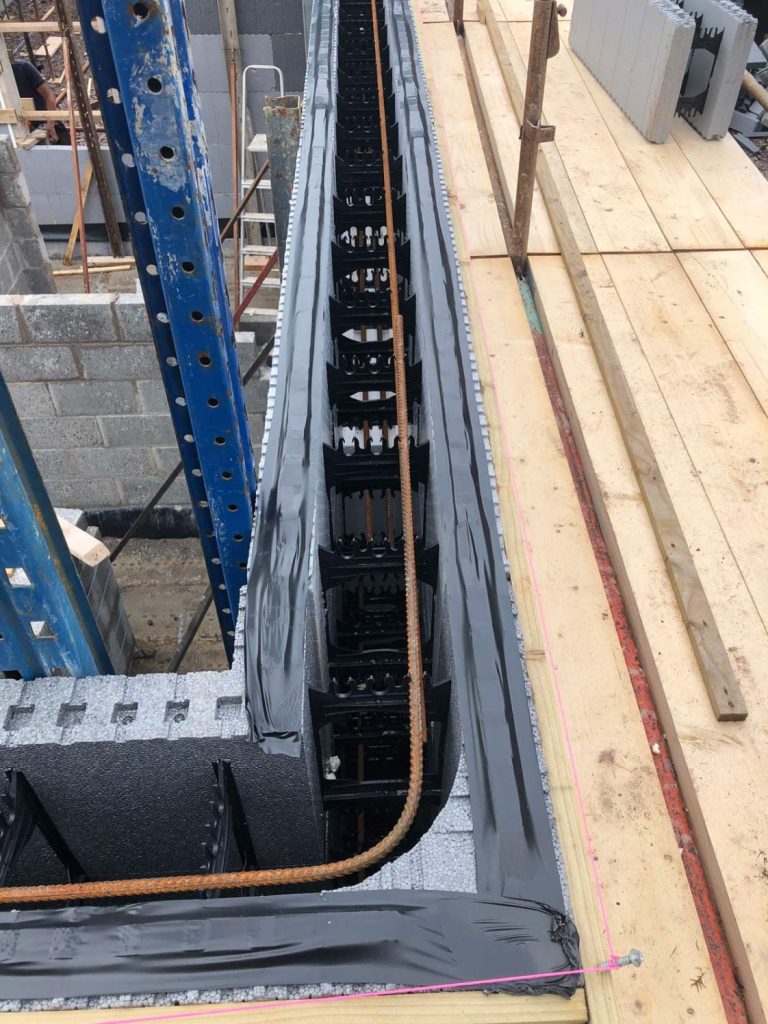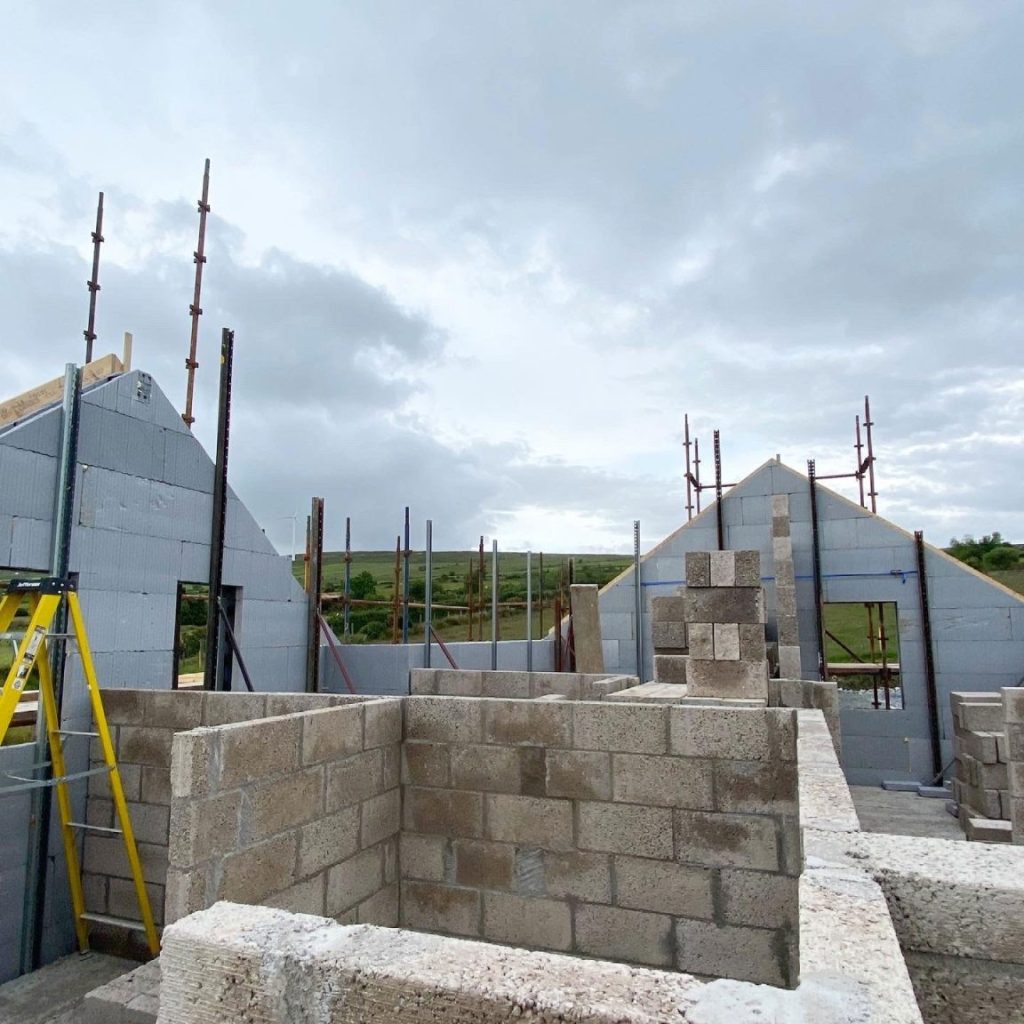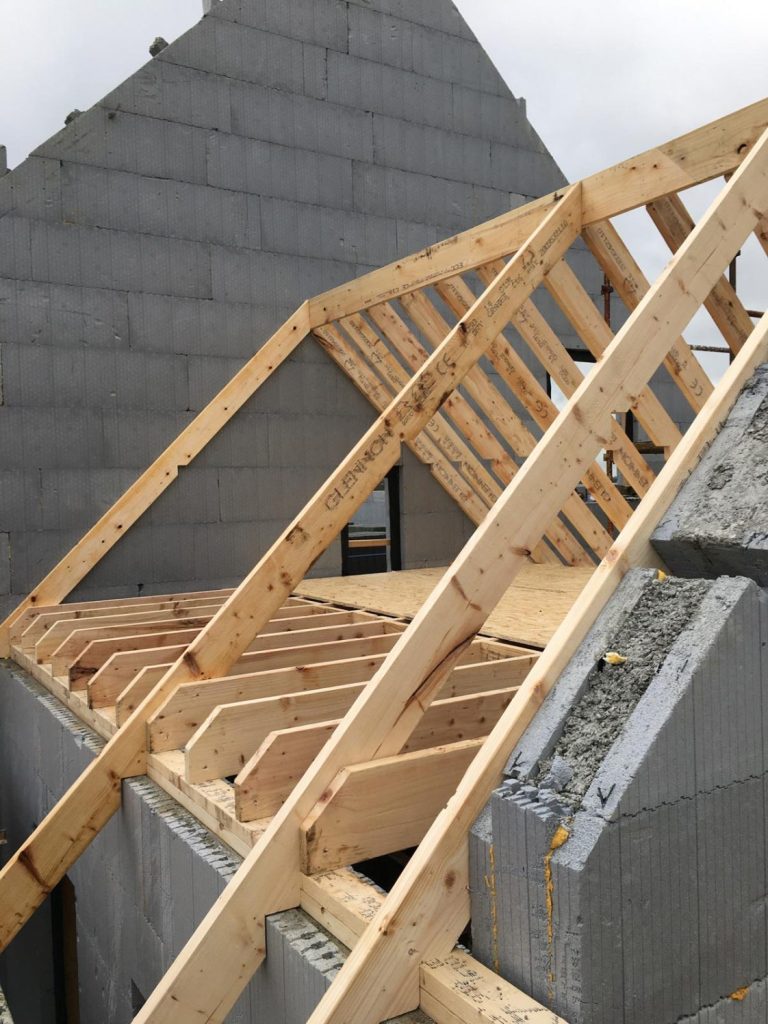Insulating Concrete Formwork (ICF) offers excellent insulation properties and structural integrity, making it a popular choice for modern construction. When it comes to finishing the exterior of your ICF walls, there are various options to consider.
ICF External Render: A Durable Choice
Traditional Sand and Cement Render
Traditional sand and cement render is a cost-effective solution, but it’s not suitable for ICF with EPS (Expanded Polystyrene) as it won’t bond properly, and its weight can cause it to detach over time.
Acrylic Render Systems
Most ICF houses opt for acrylic render systems, providing a traditional finish. Ensure that the chosen system is approved by BBA (NI) or NSAI Agrément Certificate (ROI) for use on EPS walls.

Durability
ICF render systems offer robust walls with high resistance to daily impacts. To ensure a successful render application, follow these tips:
- Wait until the ICF is fully dry after exposure to the elements during construction.
- Apply the render in specified temperature and weather conditions.
- Choose between spray gun or hand trowel application, ensuring scaffolding placement doesn’t interfere.
- Rendering typically involves four stages: bead application (2 days), base coat (3 days), primer (1 day), and final acrylic render (3 days). Colored renders may discolor over time.
- Expect to recoat the render every 18-20 years, providing an opportunity to change the color if desired.
Exploring Other External Finish Options
Stone Cladding
Similar to traditional block dwellings, stone cladding can be used for ICF. Ensure a damp proof membrane between EPS and stone cladding, and drill wall ties straight after the concrete pour for seamless integration.
External Timber Cladding
External timber cladding, whether laid vertically or horizontally, is another option. Again, use a damp proof membrane between EPS and timber battens for optimal results.

3. ICF External Finishes: Top Tips for Success
Shaun Ingram of Eco Celt shares essential tips for different finish types:
Common ICF Finishes
The most common ICF finishes include dry dash, brick and stone cladding, and thin coat renders made of acrylic or silicone resin.
Consider Weight
For mid-weight build-ups (up to around 30kg/sqm), use mushroom fixings through the mesh reinforcement layer to transfer some load to the concrete core. Heavier build-ups, like stone cladding, should primarily rely on the concrete for support.
Surface Preparation Matters
ICF surfaces are typically very smooth. Before applying finishes, rasp the surface lightly to provide a key for the render. Address any irregularities and pits to ensure a smooth result and minimise material usage.

4. Achieving the Best Results
Preventing Buildup and Staining
Dirt and algae can accumulate on non-vertical surfaces, leading to staining. Prevent this by providing sufficient overhang at fascias and soffits, using good drip details on beads and flashing, and ensuring well-defined throating and projection on mouldings and sills. Use stainless steel or corrosion-resistant fixings to avoid rust stains.
Water Ingress Prevention
Guard against water ingress by using quality UV-resistant mastics along with damp-proof courses, secondary seals (such as compression/sealing tapes), and upstands/stooling to sills. Water ingress can lead to finish delamination.
Consult Specifications and Experts
Ensure your render supplier provides a project-specific specification, and confirm that your installer is familiar with it. Avoid costly mistakes by respecting temperature ranges for application and protecting the surface from rain and strong sunlight during curing.
With these insights, you’re well-equipped to choose and execute the ideal external finish for your ICF project, ensuring both aesthetics and long-term durability.




